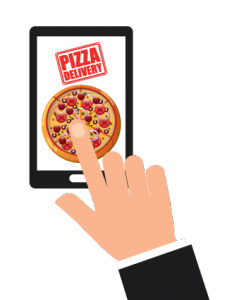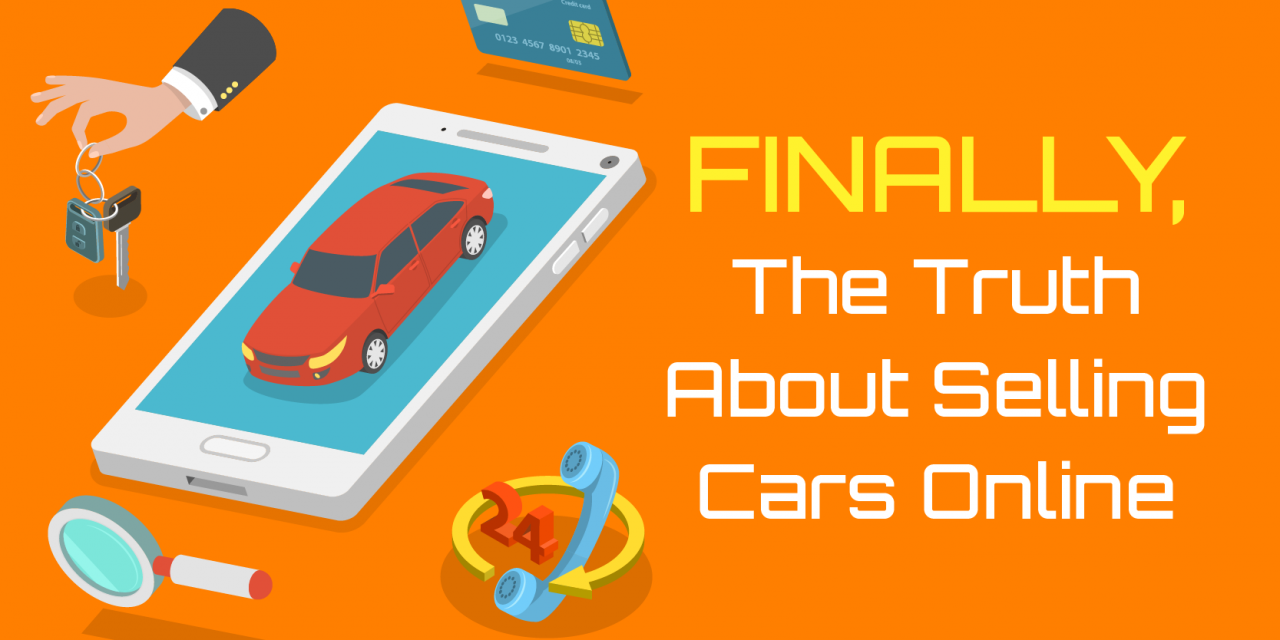Just about everyone is saying that selling vehicles online is the future of the car business. In fact, new products and services are constantly being introduced to help dealers take more of their selling processes online. From “Buy Now” buttons to robust pick-your-own financing plugins, there’s no shortage of shiny, new applications you can add to your website to move more and more in the direction of online sales.
By all accounts, it seems that full digital retailing is coming for the automotive industry. But while there seems to be a strong push toward online selling for dealers, there are still some major problems with moving the process of buying a car fully online.
Look, we’re not living under a rock. The industry might truly be moving in that direction. Heck, the world is moving in that direction, and it would be stupid to ignore the Earth moving under our feet. Changes are happening, and we need to use those changes to augment the way we market, attract customers and sell cars. But we SHOULD do it in a way that benefits both us AND the customer. And based on what we’ve seen lately, there are 3 major problems with the way the industry is approaching the advent of digital automotive retailing.
The 3 Big Problems With Digital Retailing For Dealerships
Big Problem #1: Buying A Car Isn’t The Same As Ordering A Pizza
One of the biggest arguments for moving the car buying process online is that it’s what modern customers want and expect from retailers. In fact, COO of Cox Automotive Mark O’Neil probably said it best in his interview with WardsAuto, “Fundamentally, the consumer has learned to engage digitally in every other retail category: shoes, pizza, mortgages, electronics, books; pick any category. But the auto industry has held back in letting them do it.”
And it’s true, the auto industry is lagging behind if you compare it to industries that already own the digital realm, like housewares and food retail. But there’s a problem in equating these industries with ours, namely that buying a car is not the same thing as ordering a pizza.
Sure, they’re both retail industries, but are you doing 9 hours of research online before ordering a pizza? Are you going to make payments for 5 years or more on a pizza? Is a pizza going to be one of the biggest purchases you make in your life? Our guess is no. Because people don’t finance pizzas. They don’t need a down payment or a monthly payment, and they don’t negotiate loan terms in order to get a large supreme delivered to their door.
However, for many people shopping for a car, the answer to all of these questions is yes. A car is a big purchase, and it’s a complicated one. The decisions a consumer makes about which car they want to drive are hard, much harder than what toppings they want on their pizza. And viewing the two transactions on the same level is dangerous because it results in commoditization, which devalues dealerships.
Believe it or not, commoditization is one of the biggest problems in the automotive industry today.
What is commoditization?
The definition of commoditization is “the dilution of a market sector’s internal differentiation and competitive nuances in favor of a mass market, where price alone determines consumer behavior.” Or, if you prefer an alternate definition, “a good or service whose wide availability typically leads to smaller profit margins and diminishes the importance of factors (like brand, services, solutions, expertise, relationships) other than price.”
And commoditization is happening to the industry across the board. Of course, cars are commodities. They already have very little differentiation other than price, except for fringe vehicles. But by moving the entire buying process online, you’ll be stripping out the remaining value your dealership provides, leaving customers with no reason to choose your website over another.
Big Problem #2: People Wouldn’t Actually Prefer To Buy Cars Online
A lot of industry experts are making the argument that consumers want to purchase vehicles online.
Actually, O’Neill also told WardsAuto, “One of the advantages of embracing digital retailing is the consumer does half the work. That reduces your cost structure as a dealer. By the way, the customers are happy doing that work. It’s more convenient for them, too.” A common attitude throughout the industry.
And this would be a great argument to make the move to digital retailing. Except for one little hitch—the data and the consumers themselves are actually telling us something completely different.
In fact, according to the Car Buyer Of The Future Study, 84% of consumers WANT to buy a car IN PERSON, even if they are spending 14 hours researching cars before making a purchase, with 9 hours of that time spent doing research online.
But then why are consumers spending so much time doing all of this research online?
The simple answer is because they don’t trust salespeople.
Salespeople have become unhelpful, dumb and even predatory in the business of selling, which has initiated a move away from stores. Now everyone’s using the Internet so they can do it themselves, but truth to be told it still isn’t the preferred method.
People are still seeking a buying preference. They would still prefer help and guidance. And they would still prefer to talk to an expert.
As opposed to spending hours gathering information about a product they know little about in order to distinguish a buying preference and protect themselves from a bad deal, people would rather speak to a trustworthy expert who can guide them, listen to them, advise them and make them feel confident about one of the largest and most frequently used purchases they make in a lifetime.
The only reason they’re doing this work now is because they don’t trust that they’ll find an expert who can help them when they visit a dealership. And yet 43% of car buyers still view the dealership as a place to learn (Source: Car Buy Of The Future Study).
And that means there is still an opportunity for us to turn this around and actually provide real value to people by knowing what we’re talking about, by being interested and by being able to effectively communicate. If you are enthusiastic, knowledgeable and persuasive, you can provide huge value, which will give you a dramatic advantage. Why? Because there aren’t many people who can do that and because it’s what the public truly wants.
Big Problem #3: Even Once The Technology Is Available, Not Everyone Will Be Able To Buy Online
It’s true that there are probably some people in your market who would prefer to research, shop, and buy a car online. But the deeper reality is that the percent of the population that this will actually work for is small…we’re talking really small.
“How small?” You might be asking.
Well, let’s break it down.
If you analyze the overall market, you’ll find that roughly 2% of the people in any geographic area are currently shopping for a car, be it new or used.
Of that 2%, the people who are going to have the liquidity of cash to pick their down payment and their monthly payment, all while having the near perfect credit score it will take to get approved online is also only about 2%.
That means that by moving your entire sales process online, you’re only going to be able to help about 2% of the 2% who are actually shopping. And, that’s a pretty dang small piece of the pie.
Now, do you want to throw your hands up in the air and give up on this sliver of the market? No, and we wouldn’t advise it, which is why it makes sense to do what you can to help these people get what they want. But you shouldn’t completely change the way your business works for 2% of the 2%.
Ultimately, most of the current digital retailing solutions are only going to help you target those people who can afford to do what they want when they want. So give them that option, if you want to.
But even that is a distraction when you should be focusing on the core of your business.
And keep in mind that these digital-retailing “solutions” are simultaneously turning selling cars into a commodity business, which reduces you to a two-bit player that delivers little to no value, which will shrink your margins until you’re priced out of business.
Entering into the world of online selling may seem inevitable. And we’re not saying you should dig in your heels and refuse to keep up with the times, but what you need to understand is that the Internet is merely a tool.
But it’s not the only tool. And it’s not a strategy for continuous success, especially because it’s missing such a huge piece of the pie.
The biggest opportunity in the car business is learning to market to and attract the 98 percent of the market who are not shopping but would like a new car.
 We call these people Sleeping Buyers because while they aren’t currently shopping, they are dreaming of driving a better car than the one they have right now.
We call these people Sleeping Buyers because while they aren’t currently shopping, they are dreaming of driving a better car than the one they have right now.
Why?
Because of The Miracle Of The Car Business.
What’s The Miracle Of The Car Business?
Simple. It’s the fact that EVERYONE would like to drive a Nicer, Newer® car.
Think about it: Do people wait until their old car is broken down or in an accident before they buy a new car? Not usually…otherwise, there would be no used car market. Do they wait until they HAVE TO get a better car? No way! So what motivates somebody to buy, if not logic or necessity?
The answer is simple but very important. People buy cars because of emotional reasons. They want to feel safer, more important, and more comfortable. They want to change the way other people look at them and think about them. Ultimately a car is an extension of our ego. Your car is parked right outside in the driveway, or in the parking space at work, on display for the whole world to see and judge you by. And that’s why you can motivate these Sleeping Buyers into the market. Because deep down inside they are dreaming of a Nicer, Newer® car.
But a “Buy Now” button on your website isn’t going to help you attract these customers. To find out just how big the Sleeping Buyer opportunity is in your market and to learn how you can motivate these people into your store to buy today, request a FREE Traffic Scale Report. Get yours now right here.

